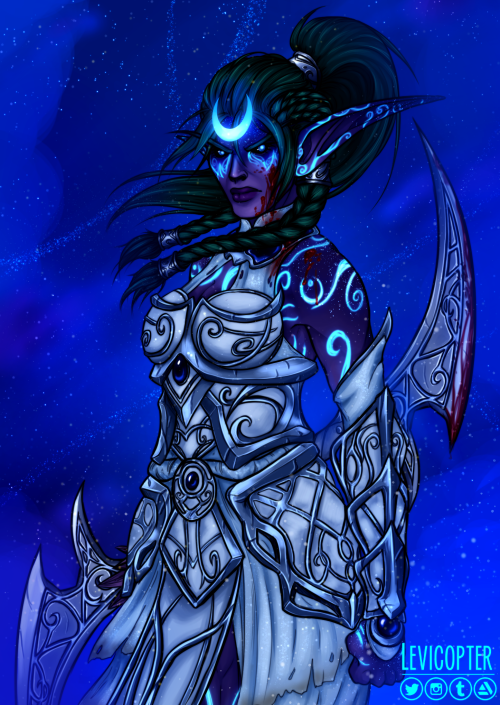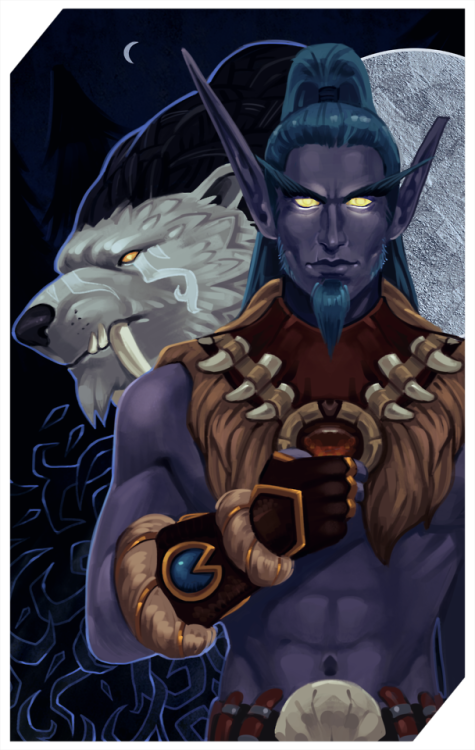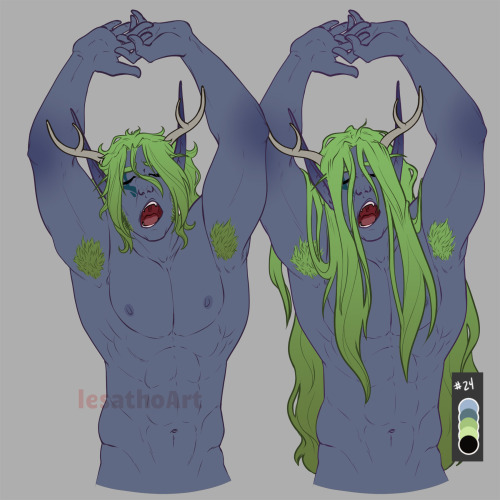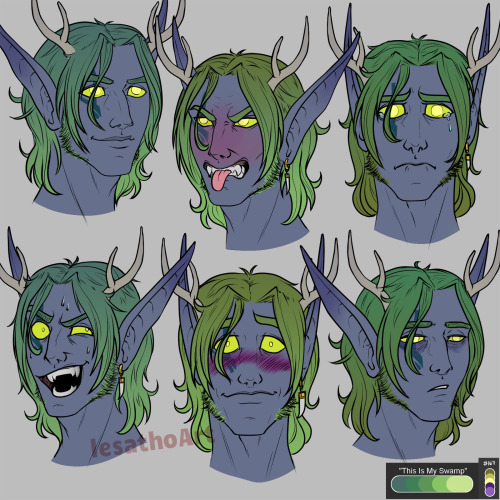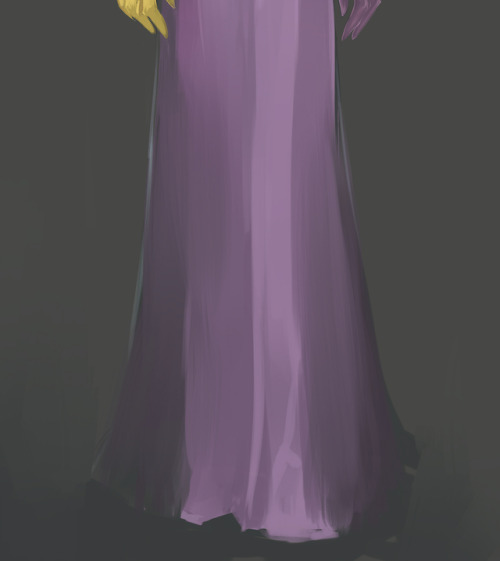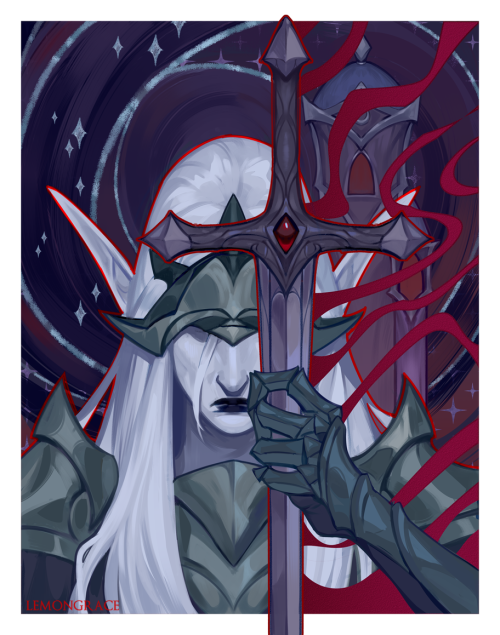#night elf
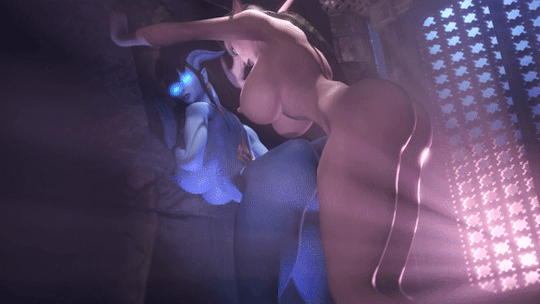

Clemency’s Desire
This was a collab animation between me and Sweetgrapes, follow him for similar content if you haven’t already! We will be doing more animations together in the future so look out for those. I also have a few other animations in the works which should be coming out in the not so distant future. The World of Warcraft characters are; Illy, (draenei) and Clemency (futa night elf). Also as usual I included the full quality 1080p 60fps link below, enjoy and thanks for following!
Full Quality Video
COMMISSION PRICE HERE: http://redlyjester.deviantart.com/journal/COMMISSION-PRICE-OPEN-689188401
My e-mail : [email protected]
Post link
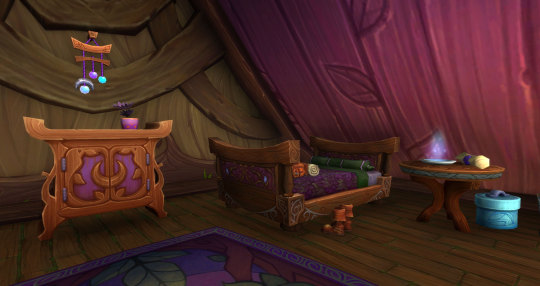
Kaldorei traditionally exchange small tokens, such as jewelry or accessories, to show their affection for one another [Page: Hairpin of Silver and Malachite,Item: Eternal Bride’s Wedding Ring]. The giving of bracers in particular is a gesture that symbolizes a sacred bond of friendship, trust, and love amongst night elves [Quest: A Cry For Help]. One elf even gifted her husband with a “pendant of bonding,” though it is unclear if that is standard practice for romantic partners in kaldorei culture [Quest: Mortality Wanes].

Preface
- Interested in the potential benefits that might come from plumbing the depths of the Maw, Cartel Ve planned an exploratory venture into the dark realm. The expedition, overseen by Ve’nari, was a success. However, Ve’nari had her fellow cartel members killed to ensure she alone would have sole access to both the Maw Walkers and the Maw’s resources (8, 132).
- Cartel Ve and Cartel Ta are rivals (8, 29).
- It is loosely implied that the Brokers altered their demeanor, if not also their appearances, to look friendly and appealing to mortals. They refer to their outward form as their “encounter suits” (9).
Chapter One: Rites of the Dead on Azeroth
- After a night elf has died, they are ritually cleansed in pools of moonlit water. Kaldorei priestesses deftly weave arcane and nature magic together to mend the dead body in preparation for a final viewing. Throughout this process, the priestesses sing songs in their temples honoring the deceased’s achievements and sacrifices in life. The deceased is then covered in a burial shroud, placed on a bier, and brought to a grove of trees where a druid magically ensconces the corpse in various plants so it can be returned to nature (13).
- Some night elves form a strong enough bond to nature that even after their death, they remain tethered to the mortal realm as a wisp [Quest: Wisp in the Willows]. This phenomenon may, however, be in part due to the intervention of the elven moon goddess, Elune (13).
- At some point in the past, Trade Prince Donais died and passed on to Revendreth (14).
- During goblin funerals, it is customary to read off a list of all the assets the deceased held in life (14).
- The Kul Tirans choose not to bury their people, believing instead that the fallen should be given to the sea [Quest: Lost, Not Forgotten, Item: Soggy Treasure Map]. An artifact called the “Dead Ringer” is a crucial part of these Kul Tiran funerary rites. In ringing the bell, it is believed the deceased’s soul is able to rise above the depths as their body sinks beneath the waves (17).
- Mourners traditionally release star moss – a magical flower notable for its sensitivity to feelings of loss – into the ocean during Kul Tiran funerals [Quest: Here In Spirit], (17).
- Cairne’s wife lingered in the mortal world as a spirit after her passing to keep watch over her bondmate and son. It is unclear why she was not brought to the Shadowlands by the Kyrian. That said, it is known that Kyrian cannot take the souls of those who are tethered by a sufficiently powerful force to their plane of origin (18).
- Tauren, not unlike orcs, construct large funeral pyres to cremate their fallen on. The ashes of their fallen are scattered to the winds, at which point it is believed they rejoin the Earth Mother (18).
- Tauren heroes are buried at Red Rocks in Mulgore. According to the tauren, the sacred nature of Red Rocks and other burial sites enables the spirits of the dead to briefly cross the Veil and talk to the living – something which the Brokers are highly skeptical actually occurs, given the design of the Shadowlands (18).
Chapter Two: Entering the Shadowlands
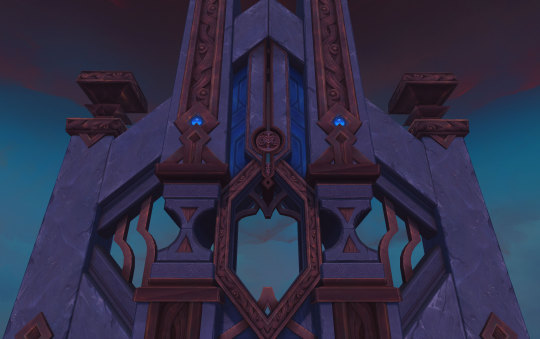
- A mortal soul accumulates anima through its deeds and experiences in life. As a result, anima varies from soul to soul (24, 30).
- The Brokers have been unable to catalogue every single afterlife in the Shadowlands, for there are too many to count (27).
- The origins of the Maw are unknown to even the Brokers. According to a member of Cartel Ta, it seems the Maw’s origins have all but been “purged from the annals of history” (29).
- The elemental forces of spirit and decay may or may not have an influence on how much anima a soul produces in their lifetime (31).
Chapter Three: Oribos
- Various Broker cartels financed expeditions to find and stake proprietary claim on Oribos. It was eventually discovered – perhaps accidentally – by an Au cartel navigator (35).
- The coiled serpent, thought to embody the infinite cycle, is a well-known symbol of the First Ones (36).
- The Brokers believe that Oribos was built explicitly for the judgement of souls well before the first mortal soul ever arrived in the Eternal City (38).
- On the other hand, the Arbiter’s attendants claim that the Arbiter chose to judge souls in Oribos of her own volition, which contradicts the Brokers’ theory (38).
- Old, worn records seem to suggest that there was a time when the Arbiter was not as benevolent as she is made out to be today (38). Of course, that is because the Jailer formerly held the role of Arbiter before he was imprisoned in the Maw [NPC: The Primus Dialogue].
- The attendants of Oribos are broken up into three groups: the Hands of the Arbiter, the scholars, and the protectors (41-42).
- The Hands of the Arbiter, the largest group of attendants, are responsible for maintaining the functions and stability of Oribos (41).
- The protectors make up the smallest selection of attendants. The highest position a protector can ascend to is the Shield of the Arbiter (42).
- Legend has it that at least one Fatescribe can affect the destinies of living mortals (42).
- The Brokers are aware there is a rumor that claims they were once another race of beings who shunned their original name and form (43).
- Within Oribos, the Au Cartel is responsible for supplying resources to mortals seeking to build up their own trade skills. Cartel Ta, on the other hand, is popular for selling unusual and uncommon items of value (44).
Chapter Four: Ardenweald
- Ardenweald’s celestial trees act as the primary means of anima distribution across the realm (50).
- Druids, hunters, and shaman all have such a deep connection to nature that they are usually sent to Ardenweald upon their death (50).
- One’s soulshape form mirrors the true nature of their bond with the wilds (51).
- Though most Wild Gods take on the form of animals in Ardenweald, it is notable that Cenarius retains a largely humanoid appearance. While it is unclear exactly why, it was hinted at that he receives preferential treatment from the ruler of Ardenweald – perhaps because he is her nephew (53).
- To save Ysera, the Winter Queen permanently sacrificed a portion of her own essence (54).
- Elune, the Winter Queen’s sister, is presumed to be a part of a “Pantheon of Life” (56).
- A full assembly of the Wild Hunt is rare, perhaps because the Hunt’s troops are usually needed as caretakers, stewards, and protectors in each of Ardenweald’s individual groves (58).
- Though the Winter Queen is technically the ruler of Ardenweald, governance of the night fae falls to a council known as the Court of Night. Their members include the late Droman Krelnor, Lord Renard, Lady Moonberry, Droman Aliothe, and Droman Tashmur (59).
- The tree-like appearance of the tirnenn is likely because they were the first fae to emerge in Ardenweald. They can alter the forests at will (59).
- Tirna Achiad, the Heart of the Forest, is supposedly the very first tree the Winter Queen cultivated in her realm (60).
- Sylvar typically function as Ardenweald’s crafters and tenders. The Vorkai, on the other hand, stand as the protectors of the realm (60).
- It is said that the faeries of the Night Fae are nearly as skilled as the Brokers in the art of illusion (60).
Chapter Five: Bastion
- The Light-Bearers of Fanlin’Deskor – a planet long since destroyed by the Burning Legion – were typically sent to Bastion by the Arbiter [Short Story: Velen: Prophet’s Lesson], (69).
- Kyrian “Watchers” primarily operate in the mortal realm. True to their name, Watchers observe souls to determine if it is their time to move on to the Shadowlands or if there is some force still tethering them to the mortal plane (77).
- Once a Watcher has dictated it is a mortal’s time to move on, a Kyrian Bearer is responsible for carrying the deceased’s soul to Oribos (77).
- The Forsworn inadvertently turn a darker, purple-ish hue that reflects the personal turmoil they feel within themselves (80).
- While the Forsworn have only recently appeared in great number in Bastion, they are not a new phenomenon. Some aspirants in the past did fail to ascend and became Forsworn, though they were something of a rarity. Even more uncommonly, aspirants ultimately unable to find their way back to the path would be exiled from Bastion and re-judged by the Arbiter so they could be sent to another afterlife (80).
- Stewards keep mementos of their small achievements just in case they happen to forget any of their accomplishments (81).
- The device Kyrian use to soul bond bears a striking resemblance to First Ones artifacts (86).
Chapter Six: Revendreth
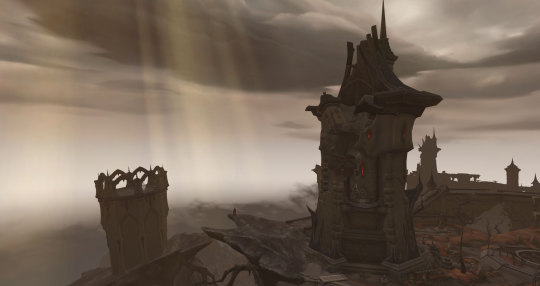
- When the drought started, Sire Denathrius used the spires of Revendreth to siphon ambient anima and add it to his hidden stores within Castle Nathria. It said that he was the “architect” of the drought (95).
- Sinfall tower is where Denathrius first founded the Court of Harvesters (102).
- Surprisingly, the walls of Sinfall withstood the Light’s bombardment in the Ember Ward. Rumor has it that this is because the defenses Denathrius implemented to contain the powers within Sinfall were so strong they kept even the Light at bay (102).
- The Venthyr’s unique ability to wend through the shadows is considered translocation magic (105).
Chapter Seven: Maldraxxus
- The Primus has the power to alter the landscape of Maldraxxus. Supposedly, he shaped the realm so it would serve as an ideal training ground for the ultimate army (112).
- Each of the five houses embodies one of the five traits of the ideal champion of Death (114).
- According to legend, the only losses the Primus ever suffered were intentional (116).
- The Primus, an expert in runes and runic power, created the language of Domination expressly to bind the Jailer within the Maw (116, 120).
- Each symbol in the Primus’ runic language represents a specific word tied to the foundations of Maldraxxus and its five houses. These could consist of anything from simple commands to necromantic energy manipulation and be used to imbue weapons with dark power or as a focus of binding magic, among other things (118).
- Death Knights emblazon their weapons with these runes of domination, though it is unclear how they ever came to learn Runeforging when it originated in the Shadowlands (118).
- The Jailer’s true name is said to hold dark power, which is why he is often referred to as the “Banished One” or “the Jailer” in official records (120).
- It is theorized that the Jailer learned to harness the Primus’ power of Domination for himself and ultimately used it to break his prison (121).
- Information exchanged in soulbinding does not completely fade, even if one of the bondmates should perish (126).
Chapter Eight: The Maw

- Many afterlives dedicated to the temporary punishment of souls exist, not just Revendreth (132).
- Before the Arbiter was broken, very few souls were ever sent directly to the Maw. If they indicated that they had even the slightest chance of atoning for their sins, they were sent to Revendreth (132).
- Cartel Ta’s archives contain no accounts of the Jailer’s appearance or his purpose beyond overseeing the souls in the Maw (135).
- It is pointed out how odd it is that a Waystone – a form of translocation – was placed in a realm explicitly meant to be inescapable. The Brokers consider two theories: the first asserts that the Waystone was intended as a failsafe in case any souls should arrive in the Maw that were not meant to be there. The second, on the other hand, claims the First Ones foresaw the coming of the Maw Walkers and placed the Waystone there for their inevitable arrival (141).
- Despite the numerous deaths he endured, Kel’Thuzad was never actually judged by the Arbiter until his final death during the war against the Lich King (142).
- One Broker believes the Arbiter’s judgement of Kel’Thuzad may have been manipulated to ensure he ended up in Maldraxxus, where he could further the Jailer’s schemes (142).
- As the troll death deity, Mueh’zala once demanded his followers perform brutal displays of worship. His needs were so extreme that he continued to thrive upon their fear and despair after they died, preventing them from passing on to the rest of the Shadowlands (144).
- However, troll civilization eventually outgrew Mueh’zala’s interest in cruelty and death. Determined not to fade into obscurity, the loa of death extended an offer to one of his priests, a troll named Bwonsamdi: in exchange for becoming Mueh’zala’s successor, Bwonsamdi was to deliver a regular tribute to the loa, thereby ensuring Mueh’zala would always have the worship he craved (145).
- When the Arbiter broke, Bwonsamdi tethered the souls of dead trolls to his Necropolis to prevent them from passing on to the Maw and empowering the Jailer. Mueh’zala, who had been in league with the Jailer for some time, was enraged at this and attacked Bwonsamdi in the Other Side (145).
- Mueh’zala brokered the deal with Odyn in which the titan-forged Keeper gave his eye to peer into the Shadowlands (145).
Chapter Nine: The First Ones and the Grand Design
- The Brokers set out from their realm of origin upon great barge cities to discover the truths of the First Ones (149).
- Other heretofore unknown First Ones realms include places like Baraneth and Nirem-Ahn. While the mortals know little about these realms, it seems the Brokers have already been to them (149, 151).
- Cartel Al outbid Cartel Ta on leading the expedition to seek out the Sepulcher of the First Ones (151).
- The First Ones were the progenitors of all realities and Pantheons (151).
- The language of the Titans uses the same word for “created” and “Ordered” (154).
- “Zereth” – first heard in the name of the First Ones realm, Zereth Mortis – translates to either “keystone” or “cornerstone” [NPC: Tal-Galan Dialogue], (160).
Epilogue
- Ta’lora, a Broker of Cartel Ta, has put forth the suggestion that their cartel should expand their market to the mortal plane to overcome the achievements of their rivals in Cartel Ve (163).

Editor’s Note:“Some of the tales you’ll encounter here may be rooted in canon, or they may be another traveler just telling a tall tale.”
Eyes of the Earth Mother
- Though the Earth Mother heard the whispers of the Old Gods, she could not be swayed by them (13).
- Pregnant, the Earth Mother sought a place away from the Old Gods’ corruptive influence to give birth to her children. Unable to find such a place, however, she decided to shape the world and, in doing so, create her own safe haven (14).
- All of Azeroth’s lands, waters, and even the elements themselves came forth at this moment. They were suffused with enough of the Earth Mother’s essence so soon after their inception that they kept the Old Gods’ powers at bay (14).
- The Earth Mother gave birth to twins: first An’she, a beacon of life and warmth, then came Mu’sha, who was to bring rest, tranquility, and healing. The elements called them the “sun” and the “moon” (15).
- Eventually, both An’she and Mu’sha developed connections with the elements. An’she found himself able to wield the light and warmth of fire while Mu’sha maintained some control over the tides and winds (15-16).
- The twins even went so far as to use the elements to create weapons to spar with. Mu’sha opted for a bow and arrow, whereas An’she’s weapon of choice was a set of blades (16).
- To keep her children safe from the Old Gods’ ever-present influence while she slept, the Earth Mother took both An’she and Mu’sha up into her eyes. Their power was so great that she had to keep one eye open at all times (16).
- This, however, meant that Azeroth no longer received An’she’s warmth or Mu’sha’s guidance of the wind while the Earth Mother rested. Cold slowly spread across the land and blizzards raged until she finally woke again (18).
- The Earth Mother’s cycle between periods of sleep and awakening would come to form the basis of the seasons as we know them, with her time of work the summer and her time of rest the winter (18).
- As the twins grew in power, they developed the ability to bring on the change of seasons at will, though they took care to do it slowly and give the world time to adjust. As the Earth Mother rested, An’she and Mu’sha continued to tend to Azeroth from behind her eyes (19).
- After waking at one point, the Earth Mother found that there was new life walking the earth. Plucking wheat from the plains to sprinkle over them, the Earth Mother called them “Shu’halo,” - the tauren (19).
- Just as the Earth Mother taught her children, both An’she and Mu’sha taught the Shu’halo in the ways of the elements and caring for the land (20).
- When the Earth Mother next slept, however, the Old Gods extended their influence to the tauren, causing them to grow violent and turn on their own kind (20).
- Saddened to see the tauren fall to such corruption, the Earth Mother shed a single tear. She realized that the land was no longer able to hold the Old Gods’ power at bay, meaning anything it touched could be corrupted (21).
- Knowing that she was not safe for her children anymore because of her own connection to the land, the Earth Mother removed An’she and Mu’sha from her eyes and laid down in despair (21-22).
- The single tear that the Earth Mother had shed became a blue baby, later named “Lo’sho,” or the Blue Child (22, 24).
- Seeking to put an end to the Old Gods after what they had done to the tauren and the despair they instilled in their mother, An’she and Mu’sha fought against some of the eldritch beings’ manifestations. During the battle, An’she was wounded grievously. Though Mu’sha sought to heal him with wind and water, he continued to bleed (24).
- The Earth Mother, stirred by her distant children’s dismay, eventually found her way to them. She urged them to take Lo’sho and go to the heavens so they could protect Azeroth from above, while the Earth Mother chose to root herself in the earth and prevent the Old Gods from ever claiming her children (26-27).
- Mu’sha, the moon, continues to follow An’she closely across the sky so she can keep tending to his wounds (26).
One Small Tuskarr
- The tuskarr etch their clan and family symbols into their tusks. Though this is customary, some do engrave other symbols - such as marks indicating deeds of great distinction - into their tusks as well (32, 36).
- The catch master, who weighs the tuskarr’s catches, has a counting staff adorned with cords in the colors of each of the clan’s active fishermen. In accordance with how big a tuskarr’s haul of fish is, the catch master ties a single knot or more into their respective cord. These knots can be traded for tools, weapons, and coins, among other things (32-33).
- A single knot is customary for those who meet basic requirements, while additional knots are allotted to those who catch more (33).
- One can also earn knots from other tasks, such as fine embroidery, though they do so at a much slower rate than those who fish (38).
- Food is shared equally among the tuskarr (33).
- The tuskarr perform nomadic journeys that take them to various kalu’ak towns. While the fishers take their own boats, most of the mothers, adolescents, and children trek across the ice (34).
- Fishing practices are passed down from parent to child. Though it is unclear if that is “law,” some of the tuskarr refuse to teach others to fish if they are not their own blood, going so far as to withhold information about the currents and places fish gather (36).
- Tuskarr sometimes dye their moustaches (36).
- It never gets fully dark in Northrend (38).
- Oacha’noa is the tuskarr’s deity of both the sea and wisdom. Her symbol is that of a kraken (39).
- The spearhead on most tuskarr weapons is made of sharpened bone (42).
- A type of manta ray known as the stargazer can be found in Northrend’s waters (44).
- The tuskarr can survive in water so cold it would kill other races native to Azeroth in mere minutes (45).
- The tuskarr typically fly kites for fun, though they have been known to use them to send signals to others at great distances (48).
Lay Down My Bones
- According to Vulpera beliefs, the first of their kind was born from the magic of the desert. Though they are a nomadic people, an old tale about an artifact called the Wailing Bone claims the desert calls their bodies back to where they began when they die. To ensure they find their way back, the vulpera follow the Wailing Bone (55-56).
- Once one of their own has passed, it is customary for the next of kin to carry the bone at the head of the caravan while the vulpera wander in search of the proper place to bury them. The journey may take anywhere from days to weeks, but when the Wailing Bone begins to cry, the vulpera know they have found their loved one’s final resting place (56, 61).
- A poem is carved into the Wailing Bone: “Wander, roam; bring me home, / Down paths at my behest; / Among the stones, lay down my bones, / So I, at last, may rest”. Few can read the script it is written in, but most all vulpera can recite it from heart (54).
- Two vulpera, frustrated at their inability to find their elder’s final resting place, neglected their duty and left his corpse in a river in the hopes that it would bring him there for them. Refusing to obey the Wailing Bone caused it to crack. From that night on, the vulpera of the caravan found themselves cursed for failing to heed the Wailing Bone (62, 65).
- Cracking under the pressure of the curse, the two negligent vulpera ultimately died gruesome deaths at each other’s hands. One of their bones was made into the next Wailing Bone (65).
- A caravan always needs a Wailing Bone (65).
The Uninvited Guest
- One goblin adage goes like so: “Every great goblin invention was born from necessity, bubble gum, or an accident” (69).
- The goblins have a nursery rhyme: “In the dark of night and bright of day, / Keep in your hand a tossaway. / Guard your fortune, mind your greed, / Or else the Uninvited Guest will feed” (70).
- The Uninvited Guest is a goblin boogeyman of sorts who is attracted by greed so egregious it offends even the dead. It is incorporeal, invisible, and has the ability to move through walls (76).
- The Uninvited Guest feeds off of greed, but it can never be satisfied. It will latch onto its host like an invisible parasite to feed, inciting strange charitable behavior in them until they have given away all of their earthly possessions (76-79).
- A “tossaway” is a shiny gold-painted coin stamped with the face of the very first trade prince. These fake coins get their name from the way goblins quite literally toss them away in a symbolically superstitious act to protect themselves and their fortunes from the Uninvited Guest (70, 74).
- Tossaways were invented by Slixi Boompowder, the wife of one of the former trade princes of the Steamwheedle Cartel, after her own run-in with the Uninvited Guest. She only escaped from it because she distracted it with actual gold galleons, which inspired her to create the tossaways (83).
- Legend has it that the Uninvited Guest still roams Azeroth to this day, looking to feed off of hapless greedy goblins (84).
- Klaxz Boompowder was one of the former trade princes of the Steamwheedle Cartel. His rival was Rikter Hogsnozzle, the trade prince of the Bilgewater Cartel (70-71).
- Tradition dictates that goblins are buried with their most valuable possessions so they can enjoy them at the Everlasting Party, the goblin afterlife. They are then given burial gifts by other goblins from their own riches, though most goblins are too greedy to truly part with anything important (73).
- Once the coffin is sealed, goblins dance on top of it to usher the deceased on to the Everlasting Party (75).
- Prominent goblins typically serve as pallbearers while goblins contractually obligated to serve as pack mules carry the rear (75).
- The goblins used to employ golden galleons as their form of currency, but it fell out of fashion. Nowadays, they are incredibly rare and expensive (74-75).
- Trolls have a tale about an invisible evil that sucks the souls from living beings and leaves them mad. It can only be seen in the light of a full moon (80).
Sister is Another Word For Always
- Vereesa felt Sylvanas’ death at the hands of Arthas the moment it happened (89-90).
- Sylvanas’ eyes were gray as a high elf (91).
- In the midst of her sorrow at her sister’s death, Vereesa sought many escapes. At first she tried to sleep, but when rest and forgetfulness would not come, she embarked on a journey across deserts and forests with little in the way of proper food or nourishment except that which she found (90, 93).
- It is very possible Vereesa perished at some point on this journey, for she came across a spirit healer, though she was told it was not yet her time. The spirit healer offered Vereesa a deal: if she could bring her the willing soul of Sylvanas without ever touching her, the spirit healer would restore her to life (96-97).
- When Sylvanas first died at the hands of Arthas, it seems as though the Arbiter sent her to Ardenweald (98-99).
- After she struggles to locate her sister in Ardenweald, Vereesa is inadvertently pulled into the Maw. There, she still has difficulty finding her, and is told by the Jailer that Sylvanas is not there - at least, not yet. He then urges her to leave, telling her she does not belong there (99, 102-103).
- Eventually, Vereesa spots a silver glimmer she knows to be Sylvanas, though it is only a fragment of her soul (103-104).
- Before she can escape with the soul of her sister, the Jailer stops Vereesa and inadvertently tricks her into touching Sylvanas, rendering her deal with the spirit healer null and void (106).
- At the end of this journey, Vereesa awakes at the foot of a statue, her memory of the experience hazy (109).
The Paladin’s Beast
- Uther is originally from Stratholme (117).
- Introduced as a fable beloved by the princelings and princesses of Lordaeron, the Paladin’s Beast is a tale that follows a young Uther as he finds himself in a mysterious and unfamiliar land. Determined to prove himself and bring back a prize to his fellow paladins, Uther joins a tournament put on by a foreign kingdom despite the protests of its princess. Though he is a strong warrior, she insists the beast of the tournament kills every knight who challenges it. Still, Uther refuses to back down, confident that his faith in the Light will give him the strength he needs to prevail. However, the princess’ words hold true, as every knight who goes to fight the beast before him perishes. When it is his turn, Uther decides to stay his hammer rather than fight, remembering the princess’ words. The beast withdraws, defeated by his act of compassion. It is revealed afterward as Uther goes for his prize that the princess actually was the beast all along, cursed to fight in the tournament for disobeying her father and breaking the royal lineage. She casts a spell on Uther, making it so that when he returns to Lordaeron, he will not remember anything of who she was or his experience there until the day he finds himself in a fiery field. Though the fable ends there, it is said that Uther dreamt of the silver kingdom and its princess for many years to come. It was not until his final moments, trying to fell a beast with weapons rather than compassion, that he would fully remember the princess and her story (111-127).
For Lies and Liberty
- Most undead do not get all of their memories back immediately once they are raised (or given free will). It takes time and encouragement (133-134).
- On the long-standing issue of whether or not undead have ichor or blood running through their veins, it appears one Jeremiah Pall still has blood in his body, though it has stopped moving on account of his still heart (134).
- The story of the “Fearless Flyer” - a man known as Captain Whitney - is famous among some of the Alliance forces. According to the man himself, Whitney and his outfit had been fighting orcs for months to no avail when he hatched a bold plan to launch himself by catapult into their camp and take them by surprise, hence the nickname the “Fearless Flyer”. This story, unfortunately, turned out to be nothing but hyperbole. As it stands, a drunk Whitney accidentally got tangled up in nets, fell in the catapult, and was unceremoniously flung into the orcish camp. Believing themselves to be under attack, the orcs retaliated and killed most of the unsuspecting humans while Captain Whitney hid (136, 142).
Stones, Moss, and Tears
- Though female elves traditionally mark their faces after they have achieved a rite of passage, they can continue to add embellishments to commemorate any further deeds (155).
- At least one kaldorei lorekeeper was charged with knowing the name of every Sentinel and recording details of their more noteworthy battles (156).
- The Bloomblade druids were one of the oldest, unbroken lines of night elf druids (158).
- A species of insect known as glowmoths migrate through Mount Hyjal every autumn (164).
The Embrace
- The White Lady and the Sun were charged with keeping watch over Azeroth as it dreamed (171, 176).
- Though she loved the people of Azeroth dearly, the White Lady found herself growing lonely and in want of a family (173).
- The moon cycles are thought to be the White Lady turning away and hiding her face in her sorrow, though she would always look back upon Azeroth to watch over it (174).
- It is said that the White Lady loved Azeroth and its denizens so much that a child - the Blue Child - was born of that love (174-175).
- The Blue Child, ever curious, began asking the White Lady questions about the mortals that weighed on her heart, as she could not answer (176).
- One night the White Lady woke up to find the Blue Child gone. Unable to find her, she swore off her charge until the Blue Child was returned to her (177-178).
- Without her guidance, the planet sped up and the tides ceased. The White Lady was only convinced to return to her duty after the Sun urged her, telling her the Blue Child might return if she had the moonlight to guide her (178).
- The White Lady began to glow even more brightly over time in the hopes that her child would see, her light quickly growing to rival that of the Sun’s. This, too, caused problems, for crops burned and navigators could not see the stars to travel by (179).
- Upon seeing the terrible effect this was having on Azeroth’s denizens, the White Lady dimmed her light and retreated (181).
- The Blue Child ultimately returned from her long travels to her mother. They embraced in the sky, creating a beautiful eclipse (182).
- Ever curious, the Blue Child was bound to grow restless again and leave for the stars, but the White Lady knew she would always return (183).
- When the moon turns red, it is a sign of her anger (177).
Why the Mermaids Left Boralus
- Back when Kul Tiras was still a Gilnean colony, Boralus had hardly any walls or structures protecting it from the wind or sea. More often than not, when the Great Sea churned at the city’s edge, it took houses, ships, and even men down into its depths. So many would drown in these incidents that those remaining covered them with weighted nets, causing them to sink to the seafloor (187-188, 190).
- Many of the roads out of Boralus flooded during great storms, making it deadly to try to leave the city on foot or by ship (198).
- The Kul Tirans declined to build a seawall for fear that it would have done nothing and also because repairing it after a storm would have been just as dangerous as the storms themselves (188).
- Most of Boralus’ early inhabitants were seamen of some sort, whether fishers, sea priests, sailors, or pearl-divers (188).
- During storms, the tidesages would act as a makeshift seawall and use their power to cut the waves before they made it deeper into the harbor (199).
- Mermaids appeared quite openly near Boralus in its early days. Though they lived much deeper than most could naturally dive, they liked to sit on the rocks and watch ships go by, among other things. Most lived in temples beneath the sea that belonged to Kul Tiras’ former inhabitants (189, 191).
- According to superstition, sighting a mermaid was bad luck and presaged many inauspicious things including a doomed voyage, a brutal winter, and poor fishing. They were also seen as the harbingers of storms (189-190).
- Tidesages were (and still are) always the first and last to disembark from a ship. As a result, they usually went down with their ships (191).
- The tidesages’ unrivaled dedication, combined with the frequency of drownings and shipwrecks, often meant they died young (191).
- Mermaids are spawned from eggs and leave no corpses when they die (191, 203).
- The mermaids had very little understanding of the Kul Tirans’ mistrust towards them (191).
- Mermaids have some power over the rocks and water - granted to them by the Tidemother from birth -, but they use it sparingly because it is finite. Once a mermaid runs out of magic, they die. As a result, mermaids can live up to five hundred years (192).
- Mermaids consider sirens lazy and murlocs deplorable (192).
- According to legend, the bubble seaweed in Boralus Harbor is actually discarded pearls. A mermaid by the name of Halia fell in love with a tidesage and kept secretly gifting them to her as a token of her affection. The tidesage, Ery, was far too pragmatic for such a gift and dumped the pearls back in the water every time (195).
- The mermaids believe that the Tidemother will give tails to those who slit their feet from toes to heels and walk into the harbor at dawn (197).
- According to legend, Boralus’ great stone seawall was formed through the combined efforts of dozens of mermaids and one lone tidesage. A virulent tempest had come upon Boralus one day, taking men and ships alike with it. Though the city’s tidesages gathered to push back the waves, all but one were lost to the storm over the course of five long days. The last remaining tidesage, Ery, persisted despite her exhaustion while the mermaid Halia, too afraid to watch her lover perish, began using her own magic to craft a seawall. Though the storm repeatedly broke it down, her fellow mermaids joined her, ultimately expending their magic and sacrificing themselves to raise a wall so grand it towered over even the mightiest of ships and waves. Ery herself nearly died after this, though Halia saved her by invoking the Tidemother. She cut Ery’s feet from toes to heels and dragged her into the harbor, performing the ritual necessary for her transformation into a mermaid (198-203).
- All but one of the mermaids - Ery notwithstanding - perished to save Boralus, which is why none are seen there today (204-205).
- As a result, the sailors of Boralus now see mermaids as a symbol of the highest honor, good luck, and sacrifice (205).
- During calm sunsets when the red of the sky is reflected in the harbor, sailors refer to it as “Ery’s blood,” after the tidesage who fought the storm so valiantly. Ery’s blood is a sign of good weather to come (205).
The Courageous Kobold and the Wickless Candle
- Kobolds tell a sleep-time story (209).
- Kobold families live together in caves. They have their own nests, but congregate in common areas for stories, among other things (210).
- Some time ago, the Whiskersnoot kobold tunnels crumbled, submerging the Whiskersnoots in total darkness. They lived like that for generations, having decided it was no longer safe to dig higher after the cave-in. This spawned a saying: “Never pick above your snout, else the darkness snuff you out!” (210-211).
- Granny Whiskersnoot, however, dug just a little bit upward every day until one day she broke through to a light above. She intended to lead the other kobolds to it, but could never find her way back through the tunnels again. It wasn’t until her granddaughter persisted in finding it that they made their way back above ground (211, 222).
- The kobolds think of the sun as a “Wickless Candle” (211).
Visage Day
- On a dragon’s Visage Day, they choose what mortal form they will take. This is significant, as it shows the Aspects trust them to adopt the guise of one of the mortal races and walk among them. It is the dragons’ hope that through choosing a form to embody and relate to mortals, the more mortals can understand dragons in turn (228, 234).
- Onyxia, on the other hand, maintains dragons choose visages that allow them to control the mortals (241).
- In accordance with tradition, the Visage Day ceremony occurs on the uppermost level of Wyrmrest Temple. Each of the Aspects are usually present for members of their own dragonflight, though Alexstrasza herself has been known to officiate on occasion. It is also customary for each flight to send emissaries (243).
- During the ceremony, all attendant dragons take their own mortal forms in honor of the dragon whose Visage Day it is (245).
- Before they publicly choose their form, the dragon in question traditionally makes a proclamation (245).
- The Visage Day ceremony can be delayed (244).
- Nozdormu has helped many bronze dragons prepare for their own Visage Day (230).
- When Nozdormu sits in the sands at the heart of the Bronze Dragonshine, intricate patterns form around him (233).
- Both Kalecgos and Chromie performed a short incantation to assume their mortal forms, though Nozdormu did not appear to need to (234, 236, 246).
- Kalecgos says that he chose a half-elf form - which he calls a “blend of mortal worlds” - in order to symbolize his own attempt to blend together the dragon and human worlds (237).
- Onyxia, on the other hand, opted to take the form of a beautiful human woman to better manipulate mortals (241).
- The dragons often go by nicknames in their mortal forms because they find their full names sound too formal to humans (238).
- The drakonid were fashioned by the dragons to be helpful and loyal (238).
- The black dragonflight practices how best to inflict pain (239).
Elfebruary Day 1 - Portait of your character
Skersis, my highborne arcanist (and queen Azshara’s nightgown).
Gentle reminder of this arcane nerd
Post link
Lazy sketches. I needed healing, seriously
Orlesian boy with a pearl earring
And highborn arcanist with his perfect literally everything
Post link
Wraith of Suramar
extremely self-indulgent diptych of my night elf mage! she’s still my fav OC even if I had neglected my nelves a bit lately
Post link
thinking bout what kinda presence id have online back in 2005 when niche internet communities and oekaki boards were still popular if i had my current skillset and was my current age and not 11
anyway just did this as a warmup before back to work
Post link
Morphie - World of Warcraft commission!
https://www.patreon.com/nixri
Have a nice Weekend everyone
Post link
Vengeance for the kaldorei !
Had fun on this been a major Tyrande fan since WC3.
https://mobile.twitter.com/Velo12
Post link


